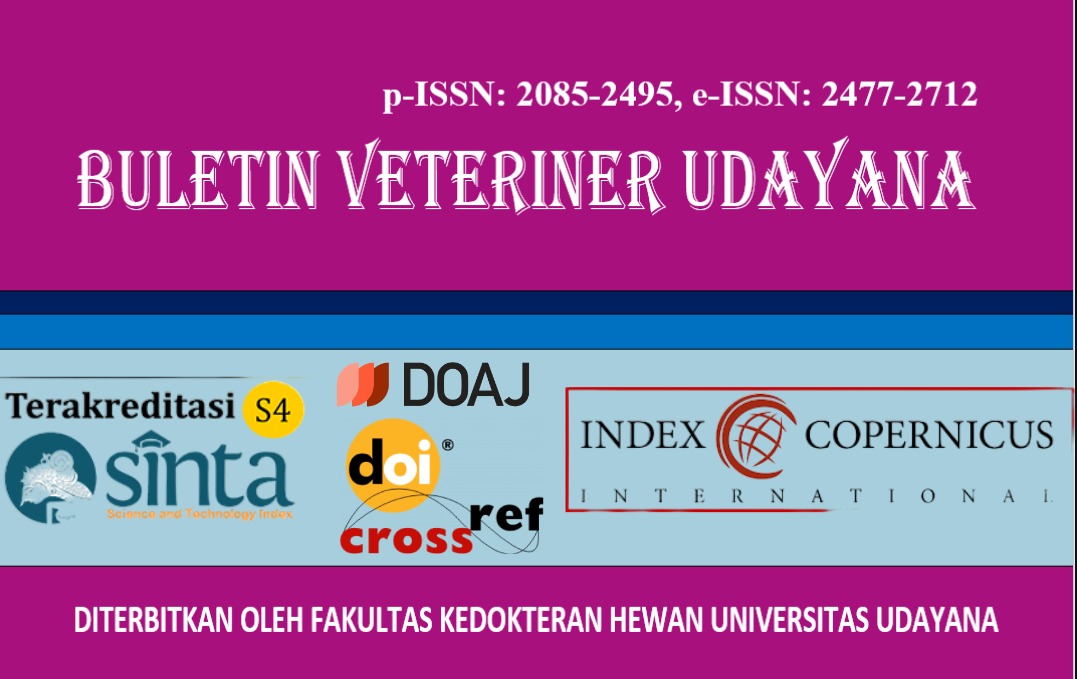PREVALENCE OF FASCIOLA SPP. INFECTION IN MUD BUFFALO USED FOR MAKEPUNG TRADITION IN JEMBRANA DISTRICT
DOI:
https://doi.org/10.24843/bulvet.2025.v17.i03.p52Keywords:
prevalence, Fasciola spp., Bubalus bubalis, JembranaAbstract
Mud buffaloes (Bubalus bubalis) are livestock that play a role in the economic, social and cultural life of the people of Jembrana district, therefore aspects of buffalo health need to be considered. One of the diseases that is a problem for buffalo health and causes economic losses for farmers is trematode parasite infection, especially Fasciola spp. The aim of this study was to determine the prevalence of infection and risk factors for Fasciola spp. worms in mud buffaloes used for the makepung tradition in Jembrana district. The samples used in this study were mud buffalo feces taken from three sub-districts namely Melaya, Negara, and Mendoyo totaling 120 samples. The examination method used a modified Parfitt and Banks sedimentation test and analyzed by Chi-square test. The results showed the prevalence of Fasciola spp. worm infection in mud buffaloes was 31.7% (38/120). Chi-square test showed the risk factors of age, region and husbandry management were not associated (P>0.05) with prevalence. The data from this study can be used as information for prevention and treatment of Fasciola spp. infection in mud buffaloes in Jembrana district.




